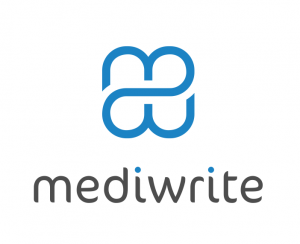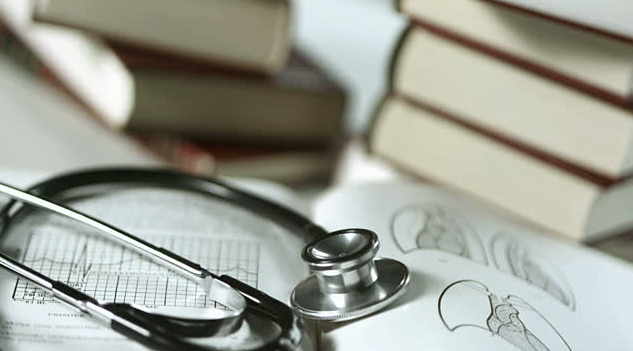As a medical writer and editor one of the most rewarding parts of my job is helping a medical professional prepare their medical textbook manuscript for publication.
When a medical professional has had a successful career it is a natural progression to want to publish a medical textbook and leave a legacy for future generations in their discipline. It is always a pleasure to help with this process.
So, here are my tips for getting started on your first medical textbook manuscript.
Start with the end in mind
Who will read your medical textbook? Or in publisher-speak what is your market? What disciplines will it be relevant to? For example, an orthopaedic text book may also be relevant to physiotherapists, medical students and general practitioners.
Identify your point of difference
Identify the other books that are similar to yours. Amazon is a great way to get an overview of the books on your specialist topic. What is your point of difference? What niche will your book fill?

Brainstorm
When working with an author I always start by working with them to form a very detailed outline of the book. This outline then forms the table of contents. The table of contents sets the structure for the manuscript and ensures that the order of chapters and material follows a logical order.
Chapter headings, the subheadings within each chapter and dot points for each section can be listed. Key references and figures can also be noted down at this point.
Start collecting material for your medical textbook
As soon as your book structure becomes defined start collecting. Get clinical photos of patients taken by your medical illustration department (with appropriate permission and measure to ensure anonymity) or take high quality digital pictures yourself. Accumulate relevant literature and file it away by topic. Collect images of MRI’s, CT-Scans, X-rays etc that will be relevant to the content of your book.
Set up styles and reference management systems
Using MS Word Styles to create headings and subheadings means that an automatic table of contents can be created and updated very easily. A reference management software system, such as EndNote, is vital for manuscripts that contain large numbers of references. EndNote automatically links to PubMed and creates a bibliography that automatically updates.
Start writing
For a busy clinician finding the time to actually write the book is the hardest part of the process. Strategies can include having a few weeks off on sabbatical, or carving out half a day per week in your diary, to dedicate to book writing. I have also heard of people locking themselves in hotel rooms for a week to get their book written.
Outsource
Employing the services of an experienced medical writer and editor can be a very cost-effective way of making progress on your manuscript. With a pile of references and a list of dot points a medical writer can produce an excellent first draft – a starting point from which you can add the finishing touches and changes to.
Figures, photos and tables
The best books have great illustrations. Thinking about new ways to illustrate key points in your book will make a big difference to readability. Consider working with a graphic designer to create graphs, info-graphics and medical illustrations. A good medical writer will often be able to prepare simple graphics for you.
The finer details
Copyright permissions
The bane of all publishers’ lives is the cost and time taken to get permissions for the re-use of copyright illustrations. Unfortunately even figures that you have created yourself in published manuscripts become copyright of the journal publisher and cannot be used without formal permission. A qualified medical writer can assist with managing the process of obtaining permissions.
Editing and proofreading
Having a great editor is essential. A good medical writer will also be able to act as your editor. If you have written the manuscript yourself engaging the services of a qualified medical editor will be necessary as they will check that formatting and styles are consistent, that you are compliant with the AMA style guide and that your grammar is perfect. Medical editors can be found via various professional organisations such as Editors NSW, IpEd and the Editorial Freelancers Association.
Get input from your colleagues
The best feedback and critique you can get will be from your colleagues. Whether it is a quick flick through or a thorough read, any feedback and comments will be invaluable to ensuring your manuscript meets the needs of your anticipated audience.
Preparing your book proposal
There are several online resources which can help you create your medical textbook proposal to send to prospective publishers. For example Elsevier have a good list outlining the structure of a book proposal.
You will need to include the following in your proposal:
- Proposed title
- Names, qualification, affiliations and a brief bio for authors
- Aims and scope
- Background and purpose
- Your intended audience and its needs
- Outline what problem your book solves
- Discuss any competing resources and your point of difference
- Table of contents
- Sample chapter
- Qualified reviewers
- Clarity and discoverability
- Optional: Multimedia content (i.e., video, audio, extended datasets, etc.).
Finding a publisher
A good medical writer may have existing contacts in the publishing industry. A good way to find an appropriate publisher is to look at who published the books that are similar to your planned manuscript. Enquire by email, asking who is the appropriate editor for your planned topic, and attach your book proposal.
Stamina required
Rounds of editing, rewriting, further editing, and proofreading can be exhausting and frustratingly slow. A good medical editor can help you speed up and manage this process. They can do a lot of the work and chasing for you. Regardless, you will need to be prepared for the psychological challenge of this process.
Self-publishing
Self-publishing is another option that can be achieved with relatively low overhead costs. I will write more about this in a future article.
Further resources
- Excellent advice and tips on authoring a text book from The Scientist magazine
- An old but excellent article about getting your book published from the BMJ
- More recent tips on publishing a medical book from the BMJ Careers website
- Advice on finding and choosing a freelance editor and the different types of editing from Writer’s Relief
If you are ready to take the leap and start work on your first medical textbook please feel free to contact me for a chat on how I can assist you with writing, editing and finding a publisher.


